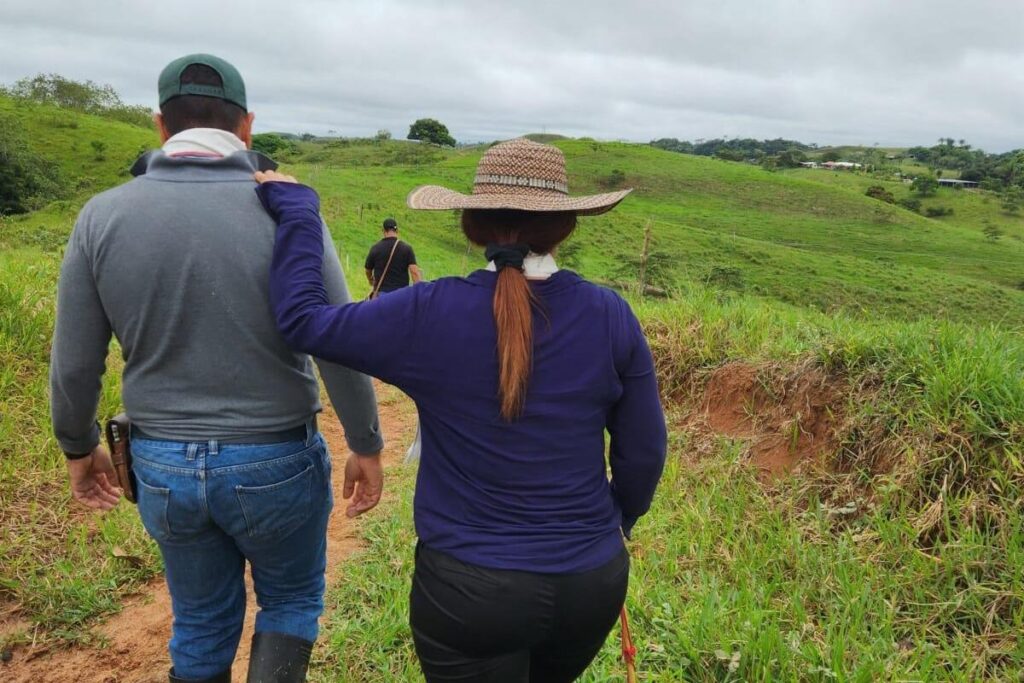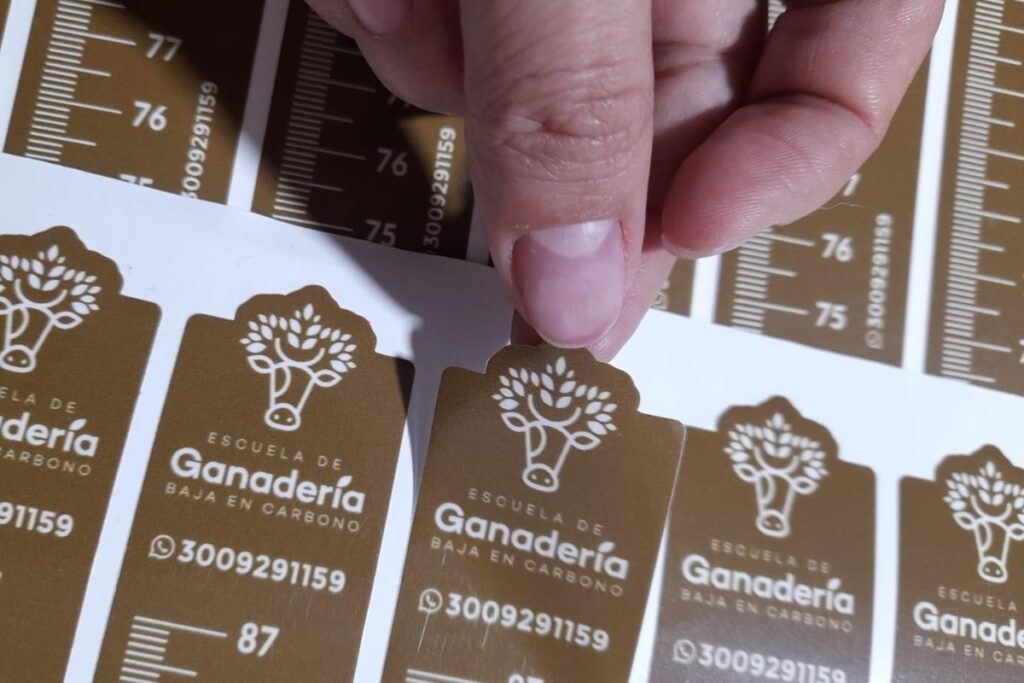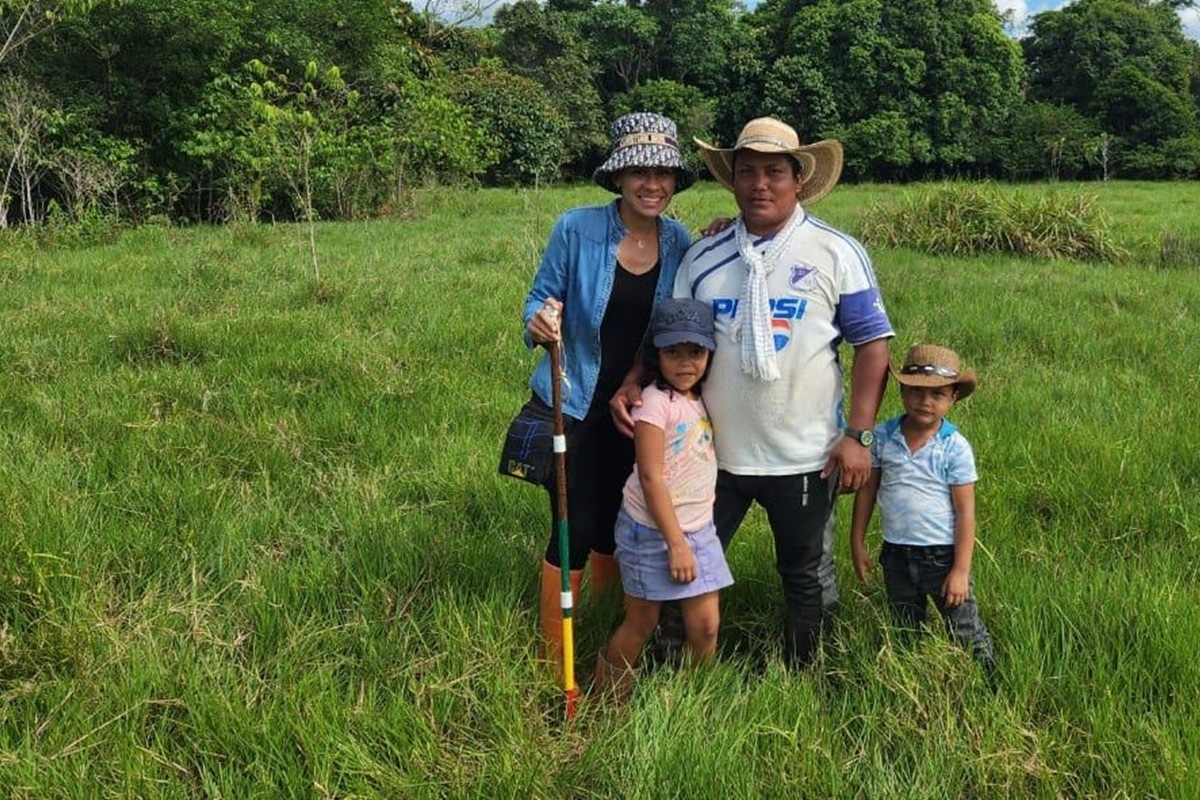The stick has a base to stand on the ground and colored stripes—red, yellow, and green—that provide a visual indicator when forage has reached an appropriate height for grazing, the stock rate per paddock, and when it’s best to let the paddock rest for recovery. This visual guide makes it easier for farmers to quickly assess the condition of their pastures, promoting a more efficient paddock rotation.
“Improper grazing management affects both productivity and soil health,” explains Heiber Pantevez, Rural Extension and Carbon Leader for Solidaridad’s Livestock Program. “With this simple tool, producers can more accurately identify when to start and stop grazing, without the need for complex calculations or expensive tools.”

During tests with farmers, the Solidaridad team compared their visual estimates with the stick readings. The results were surprising: most were off by just a few centimeters. However, these small differences, repeated over time, can translate into compacted soil, loss of vegetation cover, and a progressive decline in forage production.
“It’s common for pastures, when overexploited, to enter a kind of ‘bonsai state,’ where they cease to grow to their utmost potential,” Pantevez notes.
Experienced eyes also make mistakes
Veterinarian Yerlis Barón, part of Solidaridad’s Educational Solutions team, has extensive experience in strengthening and generating knowledge in livestock farming communities. According to her, well-managed grazing directly impacts productive indicators: higher milk production, improved weight gain, greater reproductive rates, and more resilient soils.
“Good pasture management is also a way to ensure the productive future of the farm.”
Yerlis Barón, part of the Educational Solutions Team at Solidaridad in colombia
More technical methods for estimating forage availability, such as measuring by cutting and weighing, are often overkill for farmers in the field. They involve instruments, time, and calculations that rarely fit the daily reality of small-scale livestock farmers. The grazing stick is the answer: inexpensive, easy to build, and, above all, useful.

Grazing stick: Replicable knowledge
The first stick prototype was made from PVC and colored adhesive tape. Its simplicity quickly attracted the interest of producers during its pilot phase, who replicated the tool with their neighbors. As part of its sustainable livestock strategy, Solidaridad distributed 200 grazing sticks among farmers, coupled with training sessions that enhanced their use in the field.
The development of the grazing stick was based on both local and national research on pasture management in livestock systems. The AGROSAVIA (Colombian Agricultural Research Corporation) forage analysis database, available on the AlimenTro platform, allowed Solidaridad’s team to validate pasture height ranges and optimal stages for grazing.
“The stick summarizes years of technical knowledge into a tool that farmers can easily understand and use.”
Heiber Pantevez, Rural Extension and Carbon Leader for Solidaridad’s Livestock Program
“The stick summarizes years of technical knowledge into a tool that farmers can easily understand and use,” Pantevez emphasizes. “Each color indicates a specific time: when to graze, when to leave the paddock to rest, and when to prevent cattle from entering.”
The grazing stick was first introduced in Solidaridad’s Low-Carbon Livestock School, where it demonstrated a high potential for replication in other regions within Colombia, where height ranges are adapted to local conditions.
“It was an unprecedented solution due to its practicality and immediate applicability. By adopting it, farmers not only improve their income, but also contribute to a more efficient and sustainable livestock management, both economically, environmentally and socially,” concluded Pantevez.

